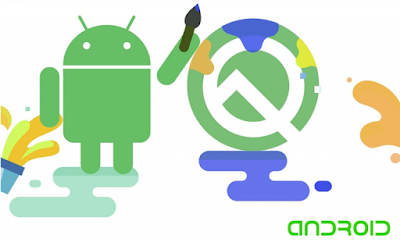But for us, we are more concerned about the latest Android system. After all, this is the highlight of the I / O conference, and the contact with us is more direct. Google didn’t let us down. At the developer conference, the software and hardware were released at the same time. Android Q was officially made public and two new Google pro-sons-Pixel 3a and Pixel 3a XL.
New Android Q:
In fact, as early as March 14, Google released the first beta version of the new Android Q, until the official release, Google has not announced the code name of the tenth major version of Android, Q stands for what. By convention, this Q will definitely represent a dessert and many software technology Inc didn’t know about that.
But that’s not important, what’s important is the upgrade brought by Android Q. We have also specifically analyzed the specific upgrades of Android Q. In general, the Android system is relatively complete, and the underlying upgrades and functional upgrades are not much. So most of the upgrades that Android Q can perceive are support for new hardware, such as folding screens and 5G networks. Let’s focus on a few perceptual upgrades.
The first major update is what many people are really eager for-the overall dark mode. If nothing else, this will be the focus of the iOS13 update. Some people may be wondering why a dark mode is so important, and why would someone cheer when it was released?
Dark Mode:
First of all, dark mode is more friendly to human eyes at night, and since most mobile phones are OLED screens, the realistic black background will turn off pixels, which can achieve the purpose of power saving. Not to mention that many people think that black backgrounds look better, so the voice of dark mode is getting higher and higher.But the dark mode is not that simple to do, which is actually very difficult. If you analyze it carefully, you can write another article. To put it simply, if it is just a black theme, it is of course simple, but to make all the interfaces can switch the display color with one click, the most difficult is the adaptation of various applications.
So at present, one-click switch to dark mode is a system-level filter method. Android Q also uses this method, which is similar to the smart flip on iOS. In other words, all colors are directly reversed, and light colors are dark, but pictures and media are intelligently identified and excluded. But identification can also be problematic:
So in earlier versions, it often happens that such pictures flip colors together, which is caused by no adaptation. With better adaptation, I believe that this situation will become less and less. When everyone is in dark mode, third-party applications will definitely cooperate with manufacturers to make more adaptations, and the experience will definitely get better.
The new gesture is also a point of concern for many people, and now new gesture support is added to Android Q. Like the iPhone, there can be a navigation bar at the bottom, and the global can be swiped back on the side. The height occupied by the navigation bar at the bottom is significantly reduced, which is more beautiful.
So are there other perceptible changes to Android Q? Rarely, it is still updated at the bottom. For example, the management of permissions is becoming more and more strict. Native support for the AV1 format, two new Wi-Fi standards named WAP3 and Enhanced Open, including improvements to the ART mechanism, are added. Support for native screen recording and desktop modes. Overall, there are still many improvements. What’s more important is that these functions are added by Google from the bottom of Android. The experience and completion are better than the functions that a manufacturer makes for its own products.
In fact, for Google, the Android system has basically matured, and all are minor repairs. The real killer is actually the next generation of Google Assistant, the most powerful voice assistant. It recognizes commands instantly and executes ten times faster than before. At the I / O conference, the host used the voice to control the phone throughout the process, without even saying a wake-up word, and without clicking. The entire process can be smooth and smooth. This is where Google’s true competitiveness lies. Of course, it may take a long time for us to experience it.
I / O conferences, which generally do not release hardware, also released the long-rumored Pixel 3a and Pixel 3a XL. The positioning of these two phones is not a flagship, but mid-range positioning, starting at $ 399 (equivalent to RMB 2703).
Its hardware configuration and appearance design have no outstanding bright spots, equipped with Qualcomm Snapdragon 670 processor, ancestral 4GB memory, storage space up to 128GB.
Fortunately, it uses the same rear camera of Pixel 3, coupled with Google’s algorithm, which is the strongest single-shot. The screen is also quite satisfactory. The Pixel 3a uses a 5.6-inch display with an 18.5: 9 aspect ratio and a resolution of FHD +. Compared to the flagship Pixel3, the Pixel 3a has no flagship SoC, no wireless charging, no dust, and water resistance, but fortunately, it has a clean native Android system, 3.5mm headphone jack is back, and the price is Not high.
In general, Google seems to be aware of the bottlenecks in the field of smartphones and feels that Google has focused on more advanced AI and search expertise. The upgrade of Android Q is more about patching the previous Android system and supporting new device updates.
The management of permissions is also getting closer and closer to iOS. Although Google wants to solve the fragmentation, it has little effect. Even native Android is no longer leading the trend, and domestic Android manufacturers have already done more comprehensive and grounded in software functions than Google. Except for some Google fans and foreign users, for most ordinary users, the appeal of native Android is actually getting smaller and smaller.
The Pixel series of mobile phones were originally very niche, which can only be regarded as Google’s sample for other mobile phone manufacturers, but this prototype machine is not competitive in the face of a large number of domestic mobile phones. Already. As domestic mobile phones become more and more powerful, the Android mobile phone market has finally become the world of “Android” mobile phones.
You May Be Like it: IOS Vs Android – Best Comparison for Both
The impact of Android version updates on our domestic mobile phones will be less and less. In all over the world, they are working on recent update of Google even software development companies in Pakistan and developers also working on this criteria to make sure that people can get more advantages and use services more conveniently

